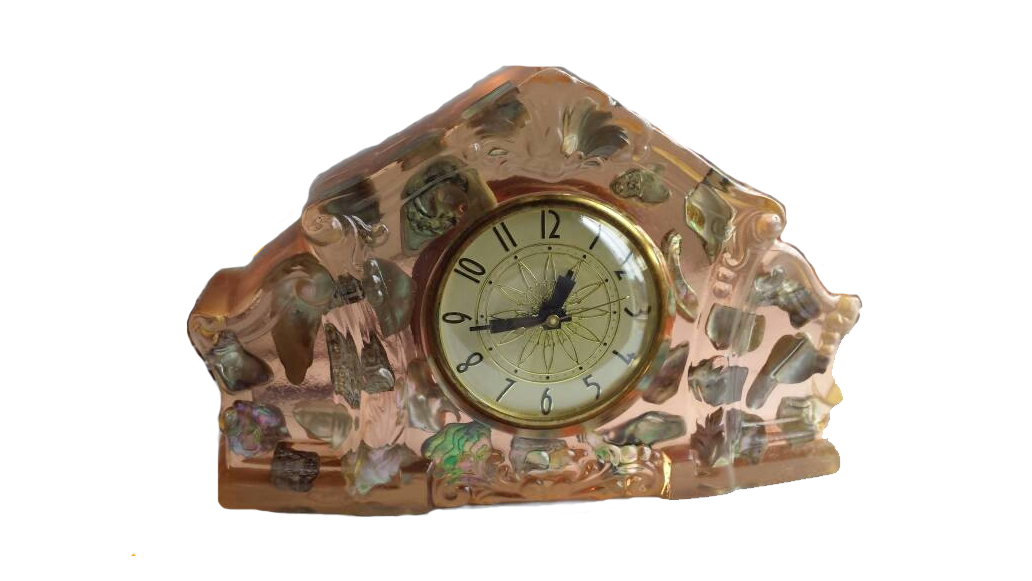In 1900s Austria, a young man working at a tile company named Frank Hollendonner learned how to make ceramic molds for pouring tiles. This young man would soon make his way from Austria to New Jersey, expanding his talent for mold making into ceramic molds used for statues, figurines, and other artwork. His talent and expertise launched Holland Mold Inc., the company whose pieces would eventually contribute to the creation of the resin clocks known today as Vomit Clocks.
The process of creating the eclectic and distinctive Vomit Clocks requires the use of several different parts: clock parts and motors, resin and the creator’s choice of rocks and objects, and finally the mold used to pour the resin to create the clock itself.
Some vomit clocks were produced using these Holland molds, which Hollendonner began to create after his immigration to the United States, where he settled in Trenton, New Jersey, one of the capitals of the ceramics industry in the country.
His combination of ceramic expertise and warm, outgoing nature quickly found him another job making molds for a tile company. With his natural perchance for making friends and connecting with others, knowledge of his talent soon spread and he began receiving commissions from his community to make molds for other purposes.
Inspired by his popular reputation and fast-growing network, Hollendonner began to wonder if he should transfer his talented skills from working for others in creating simple tiles to something bolder and more complex- ceramic molds for more artistic and intricate uses.

An advertisement for Holland Molds, April 1959 Issue of Ceramic Monthly
The Hollendonner brothers create Holland Mold
In 1946 Hollendonner decided to make the leap to create his own company. Fueled by personal sacrifice and relentless drive, Hollendonner founded Holland Mold with his brother Rudy. The Hollendonner brothers started the company in Frank’s four-car garage and soon mortgaged Frank’s own home and took out loans to fund a separate physical space for their work.
The molds created by the Hollandonner brothers ranged from those for simplistic vases for an everyday household to individual, somewhat quirky figurines handcrafted by Hollendonner. The brothers made molds used to create garden alligator statues, graceful swans hollowed out for an elegant planter, and intricate flowers. They made Christmas, Easter, and Halloween statues. The creativity and talent of Hollendonner truly blossomed in these one-of-a-kind molds he fashioned from his own ideas.


Examples of molds from hollandmolds.com
The molds created by Holland Molds are suspected to have been used in the creation of the resin clocks we call today vomit clocks; whether in kits or through craft stores creating and selling them. Resin is thought to have been poured into the Holland molds and then filled with rocks, bits of glass, or other small objects to create the clock.
On the ceramic clock-making side of things, the molds were primarily made of plaster, according to the Holland Mold Facebook page: “Molds are made of plaster and are cast with ceramic or porcelain casting slip to produce the finished pieces. A ceramic ‘piece is NOT a MOLD’.”


A Holland mold white plaster case used to create clocks
The rise in popularity for resin art from the creation of ceramic molds in the 1960s and 1970s was unfortunately met with a shift to rubber molds in the 1980s. While Holland Molds was owned by 3 generations of the Holland family; in 1997 the family decided to sell the company’s assets and retire. Though Holland Mold Inc. is no longer in business, its mark on the creative world endures through the collection and admiration for their many ceramic creations, plus the vomit clocks created with its molds.

